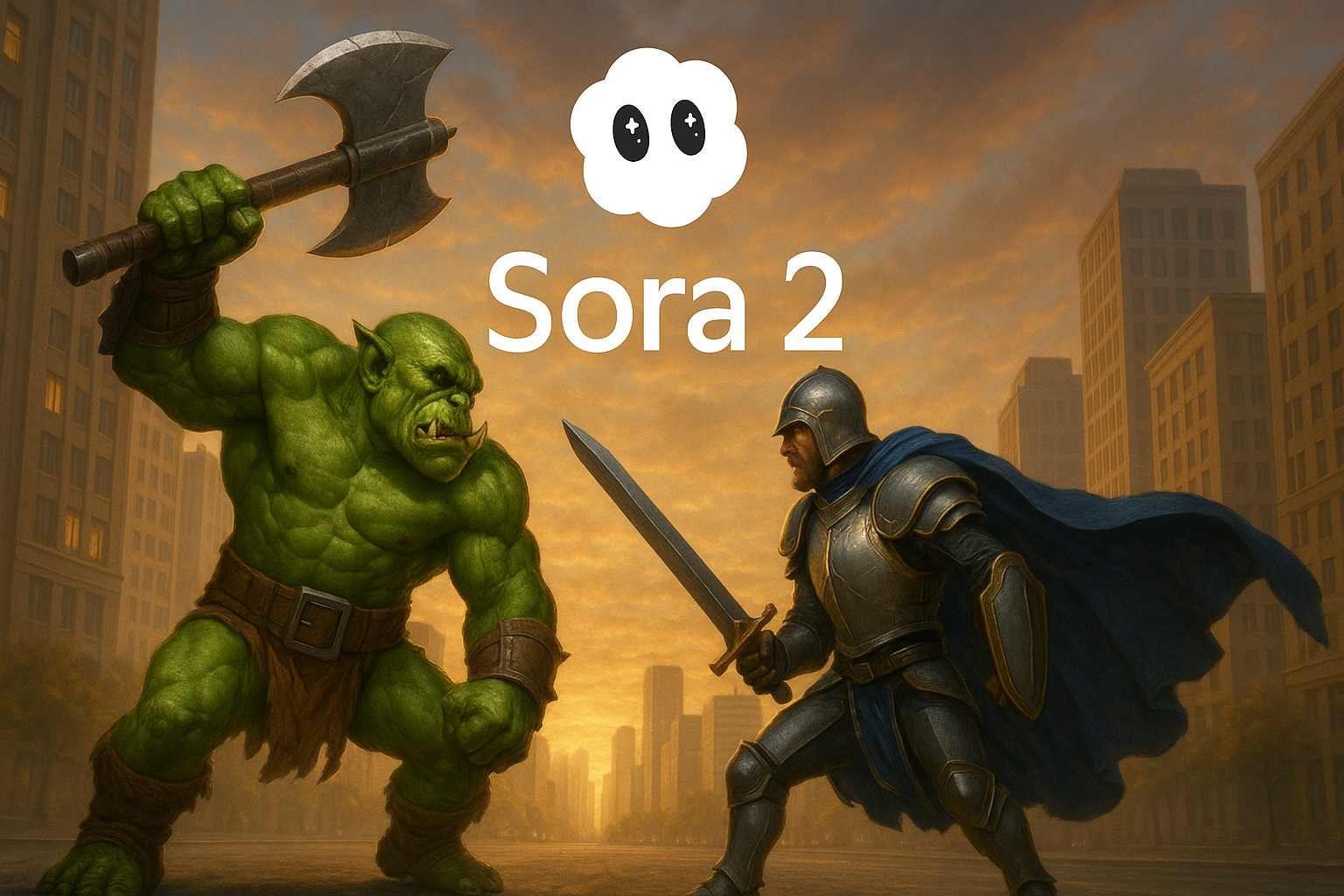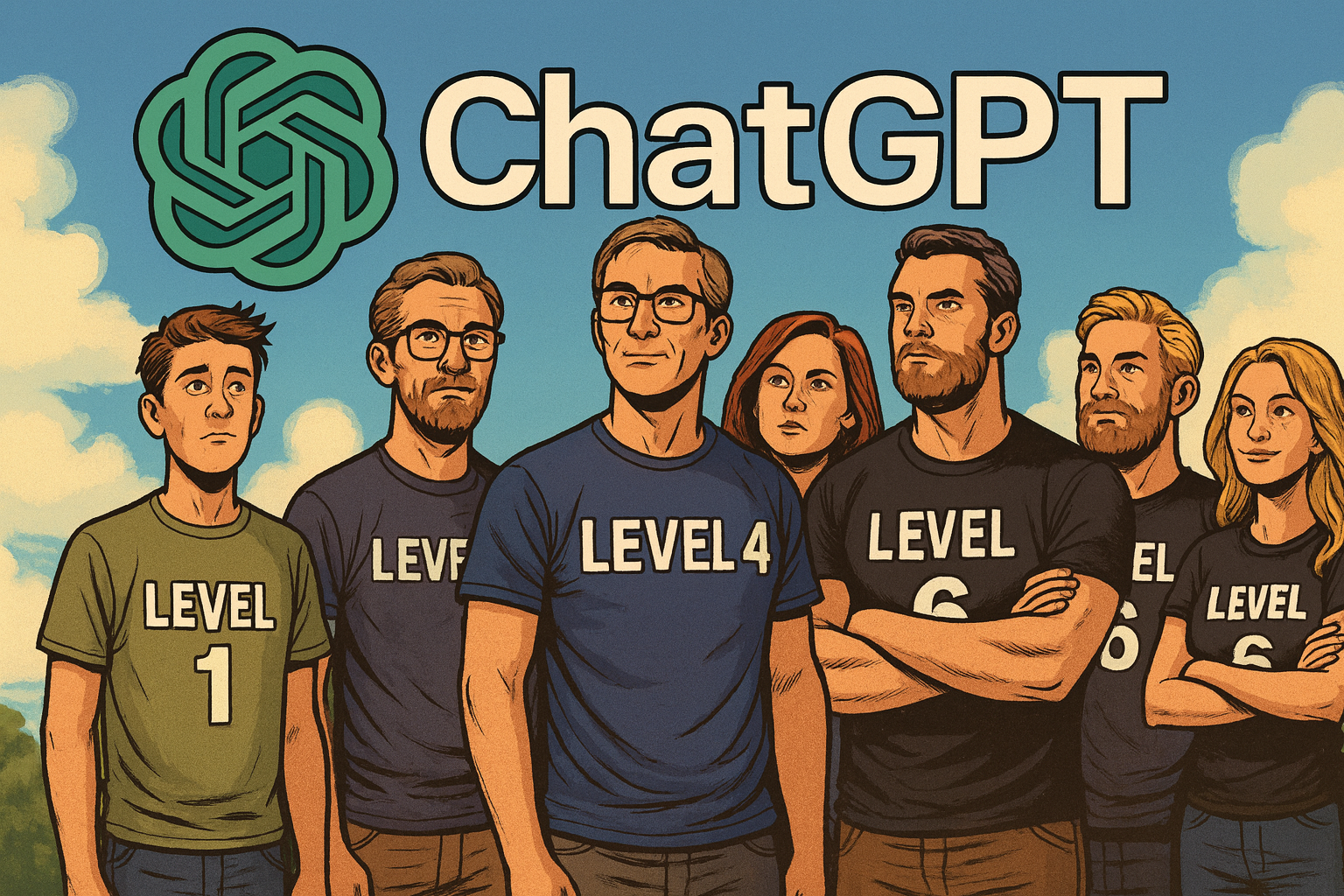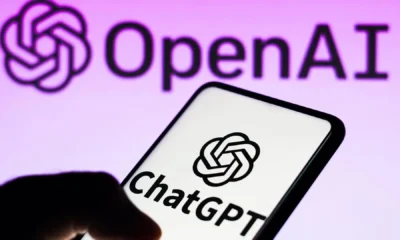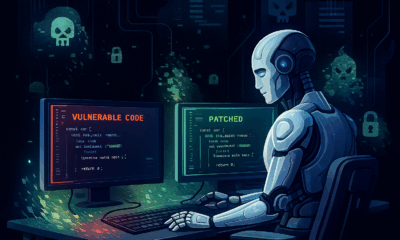AI Model
What You Can Do With Sora 2 — Your Personal Video‑Dream Factory

- Share
- Tweet /data/web/virtuals/375883/virtual/www/domains/spaisee.com/wp-content/plugins/mvp-social-buttons/mvp-social-buttons.php on line 63
https://spaisee.com/wp-content/uploads/2025/10/sora2_warcraft-1000x600.png&description=What You Can Do With Sora 2 — Your Personal Video‑Dream Factory', 'pinterestShare', 'width=750,height=350'); return false;" title="Pin This Post">
Picture this: you, starring in a cinematic short, starring in the world you imagine, all from a simple photo and a line of text. That’s the promise of Sora 2 — the next‑generation video‑generation engine from OpenAI that’s now empowering everyday users to bring fantasies to vivid life.
The Vision: You Can Be the Star
At its heart, Sora 2 gives everyone the chance to generate an original video of themselves — and by “themselves” we mean you can appear, or your likeness can appear, in scenes you invent. Want to see yourself dancing on the moon? Or riding a dragon above Tokyo? Or being the hero of a story that has never been told? Sora 2 says yes.
Sora 2 is more physically accurate, realistic and controllable than prior systems. It supports synchronized dialogue and sound effects. The message is clear: you are no longer just a viewer of video — you can be its star, its director, its hero.
All those little fantasies you’ve had — the ones you never acted on — can now play out on screen. Want a short film of yourself as an Olympic gymnast doing a triple axle with a cat on your head? That’s a real example from OpenAI. In other words: if you can describe it, you can see it.
What People Are Already Doing with Sora (and Sora 2)
While Sora 2 is very new, early users have begun to experiment in interesting ways. The app allows uploading photos or entering a prompt and producing short videos that remix or reinterpret your image in imaginative settings.
Some of the more popular uses include:
- People inserting themselves into wild, cinematic backgrounds — such as “me on a dragon in a fantasy cityscape”.
- Short, shareable clips that feel like magic: “me walking through Tokyo in lantern light”, or “me surfing a giant wave under neon city lights”.
These aren’t just fantasy scenarios — they are now actual demos being created and shared by real users. And while specific numbers on viral clips aren’t available yet, the sheer variety and creativity on display already proves the tool’s appeal.
Adoption & Download Figures
Here are the key figures so far:
- Sora exceeded one million downloads in less than five days after release.
- It reached No. 1 on Apple’s App Store during its launch week.
- While OpenAI hasn’t shared exact user numbers, momentum is clearly building fast, especially among creators and digital storytellers.
Why You Should Download Sora 2 (and Generate)
If you’re on the fence: here’s why you should give it a go.
First: You don’t need a high‑end video camera, a full film crew, or months of editing. All you typically need is a photo of yourself (or at least a clear face image) and a text prompt describing what you want. Upload your photo or choose to appear, write a one‑sentence (or more) description of your scene, and the system generates a short video.
Second: The output can be astonishing. You could end up with a short cinematic clip of yourself, with realistic motion, sound, voice and environment. The transformation from your still photo + prompt, to you appearing in a short video scenario, is magical and empowering.
Third: This is your chance to experiment. The barrier to entry is low. Even if the result isn’t “perfect Hollywood”, you’ll have something you made. You’ll star in a moment of your own creation. That alone is worth a shot.
How to Get Started: Basics of Video Generation
Here’s a step‑by‑step of what getting started looks like:
- Download the Sora app (currently in iOS invite‑only regions such as U.S. and Canada) and sign in with your OpenAI/ChatGPT credentials.
- Choose to upload a photo of yourself (clear face, good lighting helps).
- Write a text prompt describing the scene you want. For example: “Me in a futuristic city at dusk flying on a hoverboard above neon lights”.
- Optionally specify style (cinematic, anime, photorealistic) if the interface allows.
- Hit generate and wait for the clip to render (short durations: currently up to ~15 seconds for free users, up to 25 for Pro).
- Review the video, share it, or remix it if you like.
Repeat: Upload your photo + write your prompt → get your video. It’s that simple.
And again: The result can be you, living your fantasy, starring in the video you’ve always imagined. You are not just a bystander — you are the protagonist.
What the Result Can Be: Your Fantasy, Realised
Imagine this: you open the app, upload your photo, type “Me stepping onto the red carpet at a global awards show, cameras flashing, lights swirling, I smile and hold the trophy aloft”. A few minutes later you have a video where you appear in that scene. You could imagine yourself “On the moon in astronaut gear planting a flag that says ‘I Made It’” or “Riding a black stallion across a desert at dawn with dramatic skies”. These are not just possibilities — they’re actual use‑cases people are exploring with Sora 2.
Your fantasies — yes, even the ones you shelved because you thought they were too far‑fetched — can now live as a short cinematic moment. Because of the ease, you don’t need to wait. You don’t need a director. You don’t need a production crew. The tools are in your hands.
Final Encouragement: Go Create
If you’ve ever worried “I’d love to make a film about myself” or “I wish I could see myself in a wild scene”, now is the time. Download the Sora 2‑powered app, pick a photo of yourself, type your prompt, and hit generate. You’ll get a short video of yourself in your made‑up world. Use it for fun, for social sharing, for a creative experiment. Let your imagination run wild.
Don’t wait for “perfect”. The first one you make might be rough around the edges — but that’s okay. Creating is more important. Even a 10‑15 second clip starring you is a step into a new realm. Accept that you’re the star of your own story — and let Sora 2 bring it to life.
Go ahead. Upload that photo. Write that sentence. See yourself in a scene you’ve always dreamed of.
AI Model
How to Get Factual Accuracy from AI — And Stop It from “Hallucinating”

Everyone wants an AI that tells the truth. But the reality is — not all AI outputs are created equal. Whether you’re using ChatGPT, Claude, or Gemini, the precision of your answers depends far more on how you ask than what you ask. After months of testing, here’s a simple “six-level scale” that shows what separates a mediocre chatbot from a research-grade reasoning engine.
Level 1 — The Basic Chat
The weakest results come from doing the simplest thing: just asking.
By default, ChatGPT uses its Instant or fast-response mode — quick, but not very precise. It generates plausible text rather than verified facts. Great for brainstorming, terrible for truth.
Level 2 — The Role-Play Upgrade
Results improve dramatically if you use the “role play” trick. Start your prompt with something like:
“You are an expert in… and a Harvard professor…”
Studies confirm this framing effect boosts factual recall and reasoning accuracy. You’re not changing the model’s knowledge — just focusing its reasoning style and tone.
Level 3 — Connect to the Internet
Want better accuracy? Turn on web access.
Without it, AI relies on training data that might be months (or years) old.
With browsing enabled, it can pull current information and cross-check claims. This simple switch often cuts hallucination rates in half.
Level 4 — Use a Reasoning Model
This is where things get serious.
ChatGPT’s Thinking or Reasoning mode takes longer to respond, but its answers rival graduate-level logic. These models don’t just autocomplete text — they reason step by step before producing a response. Expect slower replies but vastly better reliability.
Level 5 — The Power Combo
For most advanced users, this is the sweet spot:
combine role play (2) + web access (3) + reasoning mode (4).
This stack produces nuanced, sourced, and deeply logical answers — what most people call “AI that finally makes sense.”
Level 6 — Deep Research Mode
This is the top tier.
Activate agent-based deep research, and the AI doesn’t just answer — it works. For 20–30 minutes, it collects, verifies, and synthesizes information into a report that can run 10–15 pages, complete with citations.
It’s the closest thing to a true digital researcher available today.
Is It Perfect?
Still no — and maybe never will be.
If Level 1 feels like getting an answer from a student doing their best guess, then Level 4 behaves like a well-trained expert, and Level 6 performs like a full research team verifying every claim. Each step adds rigor, depth, and fewer mistakes — at the cost of more time.
The Real Takeaway
When people say “AI is dumb,” they’re usually stuck at Level 1.
Use the higher-order modes — especially Levels 5 and 6 — and you’ll see something different: an AI that reasons, cites, and argues with near-academic depth.
If truth matters, don’t just ask AI — teach it how to think.
AI Model
81% Wrong: How AI Chatbots Are Rewriting the News With Confident Lies

In 2025, millions rely on AI chatbots for breaking news and current affairs. Yet new independent research shows these tools frequently distort the facts. A European Broadcasting Union (EBU) and BBC–supported study found that 45% of AI-generated news answers contained significant errors, and 81% had at least one factual or contextual mistake. Google’s Gemini performed the worst, with sourcing errors in roughly 72% of its responses. The finding underscores a growing concern: the more fluent these systems become, the harder it is to spot when they’re wrong.
Hallucination by Design
The errors aren’t random; they stem from how language models are built. Chatbots don’t “know” facts—they generate text statistically consistent with their training data. When data is missing or ambiguous, they hallucinate—creating confident but unverified information.
Researchers from Reuters, the Guardian, and academic labs note that models optimized for plausibility will always risk misleading users when asked about evolving or factual topics.
This pattern isn’t new. In healthcare tests, large models fabricated medical citations from real journals, while political misinformation studies show chatbots can repeat seeded propaganda from online data.
Why Chatbots “Lie”
AI systems don’t lie intentionally. They lack intent. But their architecture guarantees output that looks right even when it isn’t. Major causes include:
- Ungrounded generation: Most models generate text from patterns rather than verified data.
- Outdated or biased training sets: Many systems draw from pre-2024 web archives.
- Optimization for fluency over accuracy: Smooth answers rank higher than hesitant ones.
- Data poisoning: Malicious actors can seed misleading information into web sources used for training.
As one AI researcher summarized: “They don’t lie like people do—they just don’t know when they’re wrong.”
Real-World Consequences
- Public trust erosion: Users exposed to polished but false summaries begin doubting all media, not just the AI.
- Amplified misinformation: Wrong answers are often screenshot, shared, and repeated without correction.
- Sector-specific risks: In medicine, law, or finance, fabricated details can cause real-world damage. Legal cases have already cited AI-invented precedents.
- Manipulation threat: Adversarial groups can fine-tune open models to deliver targeted disinformation at scale.
How Big Is the Problem?
While accuracy metrics are worrying, impact on audiences remains under study. Some researchers argue the fears are overstated—many users still cross-check facts. Yet the speed and confidence of AI answers make misinformation harder to detect. In social feeds, the distinction between AI-generated summaries and verified reporting often vanishes within minutes.
What Should Change
- Transparency: Developers should disclose when responses draw from AI rather than direct source retrieval.
- Grounding & citations: Chatbots need verified databases and timestamped links, not “estimated” facts.
- User literacy: Treat AI summaries like unverified tips—always confirm with original outlets.
- Regulation: Oversight may be necessary to prevent automated systems from impersonating legitimate news.
The Bottom Line
The 81% error rate is not an isolated glitch—it’s a structural outcome of how generative AI works today. Chatbots are optimized for fluency, not truth. Until grounding and retrieval improve, AI remains a capable assistant but an unreliable journalist.
For now, think of your chatbot as a junior reporter with infinite confidence and no editor.
AI Model
Choosing the Best AI Agent in 2025: A Comparison of the Top 3

The age of AI agents—systems that don’t just answer questions but act, plan, use tools, and coordinate over time—is here. Yet the hype often outpaces reality. If you’re trying to pick the smart assistant or “digital coworker” for your workflow, you need to understand not only what the leading systems can do, but also their blind spots, error characteristics, and fit for your purpose. In this analysis, we dive deep into three of the most capable AI agents of 2025: ChatGPT Agent by OpenAI, Claude Agent with Claude Skills by Anthropic, and Manus AI Agent by Butterfly Effect.
What I’m Comparing
Each of these AI agents reflects a different design philosophy. ChatGPT Agent is tightly integrated with OpenAI’s broader tool ecosystem and excels in practical personal and team-level tasks. Claude’s agent layer focuses on enterprise automation, offering fine-grained control through its Skills system. Meanwhile, Manus represents the frontier of agent autonomy, built from the ground up for multi-step problem solving with minimal supervision.
ChatGPT Agent (OpenAI)
ChatGPT Agent is OpenAI’s foray into more autonomous assistant design. The agent can browse the web, click through pages, fill out forms, extract data, analyze files, run Python code, and retain memory throughout multi-step workflows. It connects with external applications through APIs and supports task chaining with state retention.
However, it isn’t yet capable of operating entirely unsupervised. It can struggle with long, complex workflows where adaptation and error recovery are required. It is prone to hallucination, especially in specialized domains, and users are advised to monitor outputs when stakes are high. Additionally, tool integration may require setup, permission handling, or API wrapping, which can introduce friction.
While OpenAI hasn’t published definitive error rates for its agent, internal tests show that performance drops on deeper reasoning tasks. For instance, in the “Deep Research” setting, its accuracy was around 26.6% on a benchmark for hard longform tasks (HLE). Errors tend to compound over chained operations, and the agent’s planning ability is still evolving.
Best suited for individuals or small teams, ChatGPT Agent shines when automating knowledge work such as document drafting, data analysis, and simple workflow orchestration—as long as human oversight is maintained.
Claude Agent with Claude Skills (Anthropic)
Anthropic’s Claude Agent introduces a modular, policy-conscious agent design via its Skills architecture. With Claude Skills, users can pre-define reusable behaviors and assign them to Claude. These skills can automate workflows across enterprise platforms, enforce compliance rules, and guide behavior using scripted constraints. Claude can access tools, perform code-based automation, summarize large documents, and handle memory-intensive interactions.
Its real strength lies in enterprise integration. Claude supports fine-tuned workflows for internal business processes such as document classification, financial reporting, data summarization, and regulatory auditing. Enterprises can implement custom skills that plug into internal APIs, databases, and productivity tools. Moreover, Claude emphasizes explainability, interpretability, and alignment with organizational values.
Still, limitations persist. Claude, like all LLM-based agents, remains vulnerable to hallucinations and degradation in performance over long sessions. Developing effective Skills requires effort from developers or IT teams. The system is not optimized for plug-and-play automation for individuals. Error rates remain unpublished in most categories, but Anthropic has stated its models can sustain up to 30 hours of autonomous task execution in test scenarios. However, outside these environments, performance may vary. There have also been concerns about safety when agents interact with external systems.
Claude Agent with Skills is ideal for enterprises with mature workflows and well-defined automation goals. It excels in environments that demand compliance, modularity, and internal tool integration. However, casual users or small startups may find it too complex or resource-intensive.
Manus AI Agent
Manus, developed by Butterfly Effect and launched in 2025, positions itself as a general-purpose autonomous agent capable of carrying out real-world problem solving across domains. Unlike its competitors, Manus emphasizes asynchronous autonomy. Tasks can be assigned and left to run in the background, with the agent returning results once complete. It handles file operations, script execution, data wrangling, research synthesis, and even creates dashboards or codebases.
The system uses a blend of large language models, code interpreters, and retrieval components to execute tasks over time. According to its developers, Manus achieves 86.5% accuracy on basic tasks, 70.1% on intermediate ones, and 57.7% on complex tasks in its proprietary GAIA benchmark. For comparison, human accuracy on the same complex benchmark is 92%. This suggests Manus can function well across many real-world scenarios but still has significant room to improve at higher complexity levels.
The platform’s limitations center around its novelty. Many of its benchmark claims lack independent verification. Being relatively new, it has a smaller ecosystem and fewer third-party tools or community support. And while its autonomy is impressive, oversight is still necessary—especially when executing scripts or manipulating sensitive data.
Manus is well-suited for advanced users and technical teams exploring next-generation agent autonomy. It holds promise for developers, researchers, and operations teams wanting to test the boundaries of agent-driven workflows. For mission-critical tasks, however, caution is warranted until more robust verification frameworks are in place.
Comparative Summary
To put the three agents in context:
ChatGPT Agent is highly accessible and integrates smoothly into daily professional workflows. Its ecosystem and ease-of-use make it ideal for individuals and small teams looking to automate without heavy setup. Claude Agent, with its enterprise-oriented design and modular Skills, provides robust tooling for businesses that prioritize security, compliance, and scalability. Manus, while less mature, brings bold innovation in autonomous background task handling and multi-domain execution.

Choosing the Right Agent for You
If you’re a freelancer, solo researcher, or part of a small agile team, ChatGPT Agent provides the best blend of flexibility, speed, and usability. You can automate spreadsheet tasks, create reports, synthesize research, and integrate apps with minimal setup.
If you’re managing a mid-sized to large enterprise with regulatory demands, internal tools, and structured data flows, Claude Agent with Skills is likely your best choice. Its emphasis on compliance and structured automation makes it ideal for finance, law, healthcare, and similar industries.
If you’re a forward-looking developer or part of a team exploring high-autonomy workflows—for example, building autonomous research agents, code assistants, or background schedulers—Manus is worth testing. Its background operation model and problem-solving benchmarks set it apart, though it requires careful supervision.
In all cases, it’s crucial to maintain human oversight. None of these agents are foolproof. Their autonomy is impressive but bounded by the limitations of current AI models. Planning for monitoring, version control, testing, and fallback strategies remains essential in any serious deployment.
Final Thoughts
AI agents in 2025 have matured into powerful tools capable of real-world impact. But picking the right one is a strategic decision that should reflect your goals, scale, and risk tolerance. ChatGPT excels in personal automation and ease of access. Claude leads in structured enterprise automation. Manus pushes the limits of autonomy. Whichever you choose, the key is clarity of purpose and a plan for responsible use.
-

 AI Model4 weeks ago
AI Model4 weeks agoHow to Use Sora 2: The Complete Guide to Text‑to‑Video Magic
-

 AI Model3 months ago
AI Model3 months agoTutorial: How to Enable and Use ChatGPT’s New Agent Functionality and Create Reusable Prompts
-

 AI Model4 months ago
AI Model4 months agoComplete Guide to AI Image Generation Using DALL·E 3
-

 AI Model4 months ago
AI Model4 months agoMastering Visual Storytelling with DALL·E 3: A Professional Guide to Advanced Image Generation
-

 News1 month ago
News1 month agoOpenAI’s Bold Bet: A TikTok‑Style App with Sora 2 at Its Core
-

 News4 weeks ago
News4 weeks agoGoogle’s CodeMender: The AI Agent That Writes Its Own Security Patches
-

 News4 months ago
News4 months agoAnthropic Tightens Claude Code Usage Limits Without Warning
-

 Tutorial4 weeks ago
Tutorial4 weeks agoUsing Nano Banana: Step by Step











